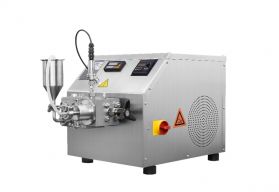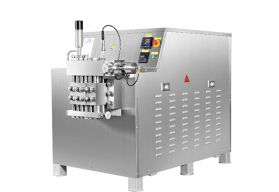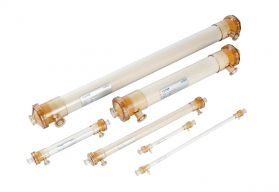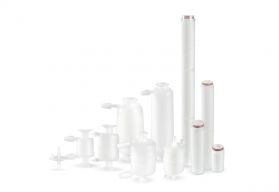Diabetes is a global disease affecting more than 420 million people (6% of the world's population), a number that is expected to balloon to 500 million by 2030 and 700 million by 2045. The increase in the number of diabetic patients worldwide will lead to a consequent increase in the need for insulin. Furthermore, there is an unmet need for affordable insulin, especially in low- and middle-income countries. Many people with type 1 diabetes who live entirely on insulin do not have access to insulin. Of the 60 million people with type 2 diabetes who require insulin therapy, one in two do not have access to insulin because of price (WHO 2021).
Injectable insulin is important in the treatment of both type 1 and type 2 diabetes, and recombinant human insulin has been shown to offer significant advantages over extracted insulin. For the production of insulin, two different production methods have been reported. In the first method, the A and B chains of insulin are cultured separately in bacteria as inclusion bodies. Then, the two chains are purified separately, then chemically joined, followed by a final purification step. In the second technique, proinsulin is expressed in E. coli in the form of a tryptophan promoter with methionine linked to proinsulin. Cyanogen bromide (CNBr) is used to cleave the linkage, then form the folded peptide through the correct disulfide bonds, and finally enzymatically eliminate the C-peptide. The "proinsulin route" is preferred because it requires only a single fermentation and purification procedure, and the production process is more efficient compared to the two-chain combinatorial approach.
In addition to using bacteria as a host system, yeast is also used for the commercial production of insulin. The main yeast strains used commercially are Saccharomyces cerevisiae and Pichia pastoris. The yeast-based expression system produces a soluble insulin precursor that is secreted into the culture supernatant. There are pros and cons to using bacteria and yeast as expression systems. Production of precursor insulin via the bacterial inclusion body pathway generally results in higher product concentrations and productivity. Compared to soluble expression of bioactive therapeutic proteins, inclusion bodies have good mechanical stability and are resistant to proteolytic degradation. In terms of downstream purification, target proteins in inclusion bodies are also isolated in a purer and more concentrated state compared to secreted proteins, which require removal of large amounts of host cell protein impurities from culture supernatants. Peptides are also easier to isolate from inclusion bodies due to their different sizes and densities compared to host proteins.
The use of Escherichia coli as an expression system for large-scale recombinant insulin production has the advantages of high growth rate, simple media requirements, easy for operation, high yield, and cost-effectiveness. E. coli is also well characterized genetically, and a large number of mutant host strains and cloning vectors are available. However, the inclusion body production pathway in E. coli requires complex processing, such as solubilization and refolding procedures, to obtain fully functional polypeptides. For most biopharmaceutical companies, Escherichia coli remains the host system of choice for the production of recombinant insulin, with human insulin and its analogs expressed in inclusion bodies in most cases. Insulin analogs are synthetically produced variants of insulin whose amino acid sequence differs from native human insulin. Such changes have been made to more closely mimic the normal physiological pattern of insulin secretion in humans.
The single-chain insulin precursor molecule in E. Coli inclusion bodies was mostly misfolded. Inclusion bodies are extracted from cells, washed, and the precursor molecules are solubilized. The production of proinsulin requires peptide folding and the concomitant formation of disulfide bonds. After an enzymatic reaction, the refolded precursor molecule is converted into a heterodimeric insulin molecule by removal of the C-chain and N-terminal fusion peptide. Various chromatographic purification steps are required to remove host cell proteins, nucleic acids, membrane debris, and digestion by-products to yield highly purified products.
The downstream process for purification of recombinant human insulin/analogues from E. coli inclusion bodies is complex, involves multiple steps, and details of the processes established by different companies are often proprietary. The method used in each step will have a major impact on the product purity and yield in the next step, so in-depth consideration and research should be done during development and optimization.
None
None
 High-Pressure Microfluidizer Homogenizer
High-Pressure Microfluidizer Homogenizer  Pilot-scale high pressure homogenizer
Pilot-scale high pressure homogenizer  Benchtop high pressure homogenizer
Benchtop high pressure homogenizer  Production scale high pressure homogenizer
Production scale high pressure homogenizer  Hollow Fiber Filter Module
Hollow Fiber Filter Module  Hydrophobic Polytetrafluoroethylene (PTFE) Filter
Hydrophobic Polytetrafluoroethylene (PTFE) Filter  High-Precision Polypropylene Filter
High-Precision Polypropylene Filter  Low-Diffusion Polyethersulfone Filter
Low-Diffusion Polyethersulfone Filter Copyright © Shanghai Duoning Biotechnology Co., Ltd. All Rights Reserved Sitemap | Technical Support: 
Message-